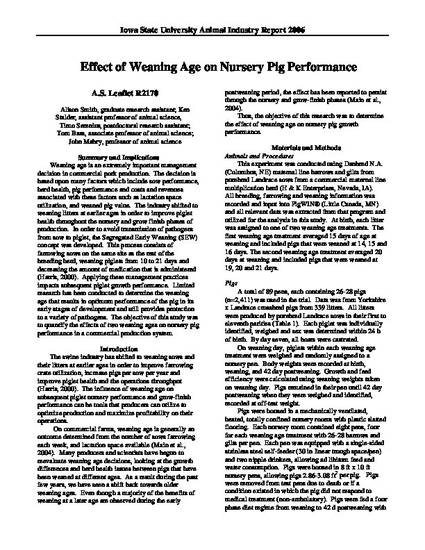
Weaning age is an extremely important management decision in commercial pork production. The decision is based upon many factors which include sow performance, herd health, pig performance and costs and revenues associated with these factors such as lactation space utilization, and weaned pig value. The industry shifted to weaning litters at earlier ages in order to improve piglet health throughout the nursery and grow finish phases of production. In order to avoid transmission of pathogens from sow to piglet, the Segregated Early Weaning (SEW) concept was developed. This process consists of farrowing sows on the same site as the rest of the breeding herd, weaning piglets from 10 to 21 days and decreasing the amount of medication that is administered (Harris, 2000). Applying these management practices impacts subsequent piglet growth performance. Limited research has been conducted to determine the weaning age that results in optimum performance of the pig in its early stages of development and still provides protection to a variety of pathogens. The objective of this study was to quantify the effects of two weaning ages on nursery pig performance in a commercial production system.
Available at: http://works.bepress.com/kenneth_stalder/34/
